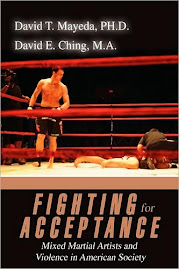 I recently listened to two interviews with Gretchen Peters, author of the recently released book, Seeds of Terror: How Heroin Is Bankrolling the Taliban and al Qaeda, on NPR (Fresh Air 5/11/09; Talk of the Nation 5/12/09). Ms. Peters’s contributions to the discussions prompted me to read through her research and interpretations of America’s misguided war on terror, which she claims has almost entirely dismissed heroin trafficking as significant in the Taliban’s and al Qaeda’s rise.
I recently listened to two interviews with Gretchen Peters, author of the recently released book, Seeds of Terror: How Heroin Is Bankrolling the Taliban and al Qaeda, on NPR (Fresh Air 5/11/09; Talk of the Nation 5/12/09). Ms. Peters’s contributions to the discussions prompted me to read through her research and interpretations of America’s misguided war on terror, which she claims has almost entirely dismissed heroin trafficking as significant in the Taliban’s and al Qaeda’s rise.Seeds of Terror relies on Peters’s and her research assistants’ personal time in Afghanistan and Pakistan, as well as connected countries in the drug trade, such as the United Arab Emirates. She and her team spoke extensively with U.S. government and military personnel, as well as Afghan farmers, police, military, and government officials.
She also sought out interviews with suspected drug traffickers, loosely integrated in and out of the Taliban. Her work was well researched, relying heavily on U.S. military sources, and her willingness to interact with individuals and groups that would not always lend to one’s safety.
I found that Seeds of Terror held three primary contentions.
First, the Taliban and al Qaeda organizations are not simply terrorist groups. Since the 1980s, but increasingly since the U.S. stopped supporting the mujahideen after the Cold War ended, these organizations have relied on poppy harvesting and the production of heroin in order to fund their causes. In turn, the Taliban’s and al Qaeda’s goals are not just ideological. Their goals are grounded equally, if not more so, in drug trafficking and the billions of dollars it generates.
…the definition of Taliban member and drug smuggler is blurring. Taliban help organize farm output in the regions they control, and some commanders even run their own heroin labs.
Today’s battles are more diversionary attacks to protect big drug shipments, rather than campaigns for strategic territorial gain. In many areas, drug smugglers have their own armies whose fighters are widely referred to as “Taliban.”
[…]
One thing is clear: as the insurgents get sucked deeper into drugs, commanders are losing ties to ideological roots of the Taliban movement (p. 12).
Peters illustrates throughout her chapters the detailed ways that opium and heroin are produced and trafficked through Afghanistan, Pakistan, Uzbekistan, South Asia, and Western Europe, and how the processes follow typical drug trafficking schemes – money laundering, organizational corruption, regional intimidation, and international banking systems.
Thus, by defining the Taliban and al Qaeda only as ideological terrorists and not drug traffickers, U.S. responses have been futile. I see this as Peters’s second main point – that in its international approach to the war on terror, the U.S. has once again designed efforts that pursue a narrow propaganda-fueled goal of combating terrorism, rather than addressing the multiple problems in Afghanistan, Pakistan, and Iran holistically.
Early in her text, Peters notes that historically, the U.S. government has financed and trained rebel groups in numerous parts of the world to fight our ideological wars, whether they be against communism in the 1980s or against religious fundamentalism in the 21st century. These rebel groups, however, are frequently criminals of other sorts, showcasing that U.S. international approaches to “peace” lack the moral and strategic foresight to actually bring peace and global stabilization.
From Laos to Nicaragua, the CIA’s tendency to get into bed with rebel groups prone to illegal drug smuggling repeatedly landed the agency in hot water and spawned no end of fanciful conspiracy theories (p. 47).
Presently, the approach in the Middle East has been slightly different. Since 9/11, the U.S. has been so fixated on apprehending high-ranking Taliban and al Qaeda officials and impeding the spread of sharia law, we have essentially ignored drug trafficking. In turn, we are allowing the primary means by which ideological terrorists fund themselves to flourish. Thus, while opposition to sharia law is certainly necessary, it is ineffective if the drug trade is ignored.
The third major area addressed by Peters is corruption, which runs rampant throughout virtually every key organization in Afghanistan and Pakistan – the police, government, and military. Drug traffickers sustain the drug trade by manipulating the necessary individuals and small groups within these organizations (it should be noted, the same thing happens in the U.S. and other developed countries).
In our efforts to fight terrorism, we have invested more money into developing Iraq’s infrastructure than revamping more ethical institutions in Afghanistan or Pakistan, which looks good to the American public, but has had deleterious long-term effects.
As such, Peters criticizes the U.S.’s approach to the drug war, which involves eradicating poppy fields. The short sightedness, Peters points out, is obvious – this approach empowers the drug traffickers by victimizing impoverished, already victimized farmers, raising the international value of heroin, and creating more disdain for the U.S. Peters offers tangible suggestions for reform, that primarily involve pursuing high-end drug traffickers in the same way the U.S. is pursuing al Qaeda leaders, such as Osama bin Laden.
One concern with the text lies in a new criminalization of Middle Easterners. No longer cast as potential terrorists, Middle Easterners will now carry the additional harmful label of drug trafficker, smuggling heroin and/or other illegal goods across their own regions, South Asia, and western Europe. In the wake of 9/11 and the multiple conflicts that have ensconced U.S.-Middle Eastern relations for decades, Seeds of Terror unintentionally adds another dimension of the Middle Eastern “threat” to mainstream western minds (see McAlister, 2001).
Further reading:
Afghanistan: Farmers face poppy dilemma



 Over on
Over on 























